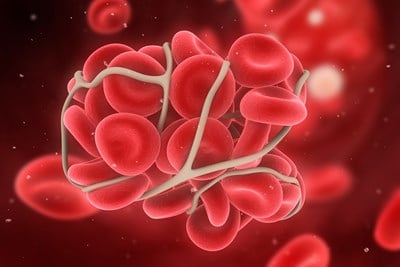Deep vein thrombosis (DVT) is the presence of a blood clot (“thrombus’) in the deep veins of the body—the legs in particular. A thrombus may form for a variety of reasons, from underlying disorders that interfere with the body’s appropriate clotting response to a sedentary lifestyle. DVT can be life-threatening, which makes it important to be aware of the signs that a clot has settled in. Here is a look at the signs and symptoms of deep vein thrombosis.
Signs and Symptoms
When a clot forms in a vessel, it blocks up the passageway so that blood can no longer circulate through the veins and arteries. In fact, it can’t move past the clot at all. This can cause swelling around the area where the thrombus has lodged. The legs are particularly susceptible, and while any swelling that occurs is generally in the suffering leg, it is possible for this inflammation to occur in both legs. Additionally, you may notice some pain, generally described as a sharp, cramp-like sensation, although it may simply be quite sore.
It is important to note that DVT is not always heralded by swelling or pain, making it doubly dangerous. If you’re concerned about developing DVT—particularly if you have multiple risk factors—see a doctor immediately to prevent life threatening complications.



